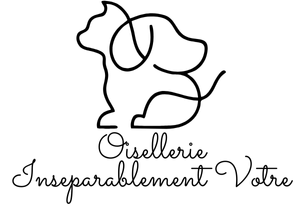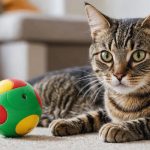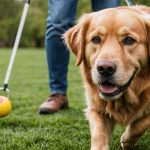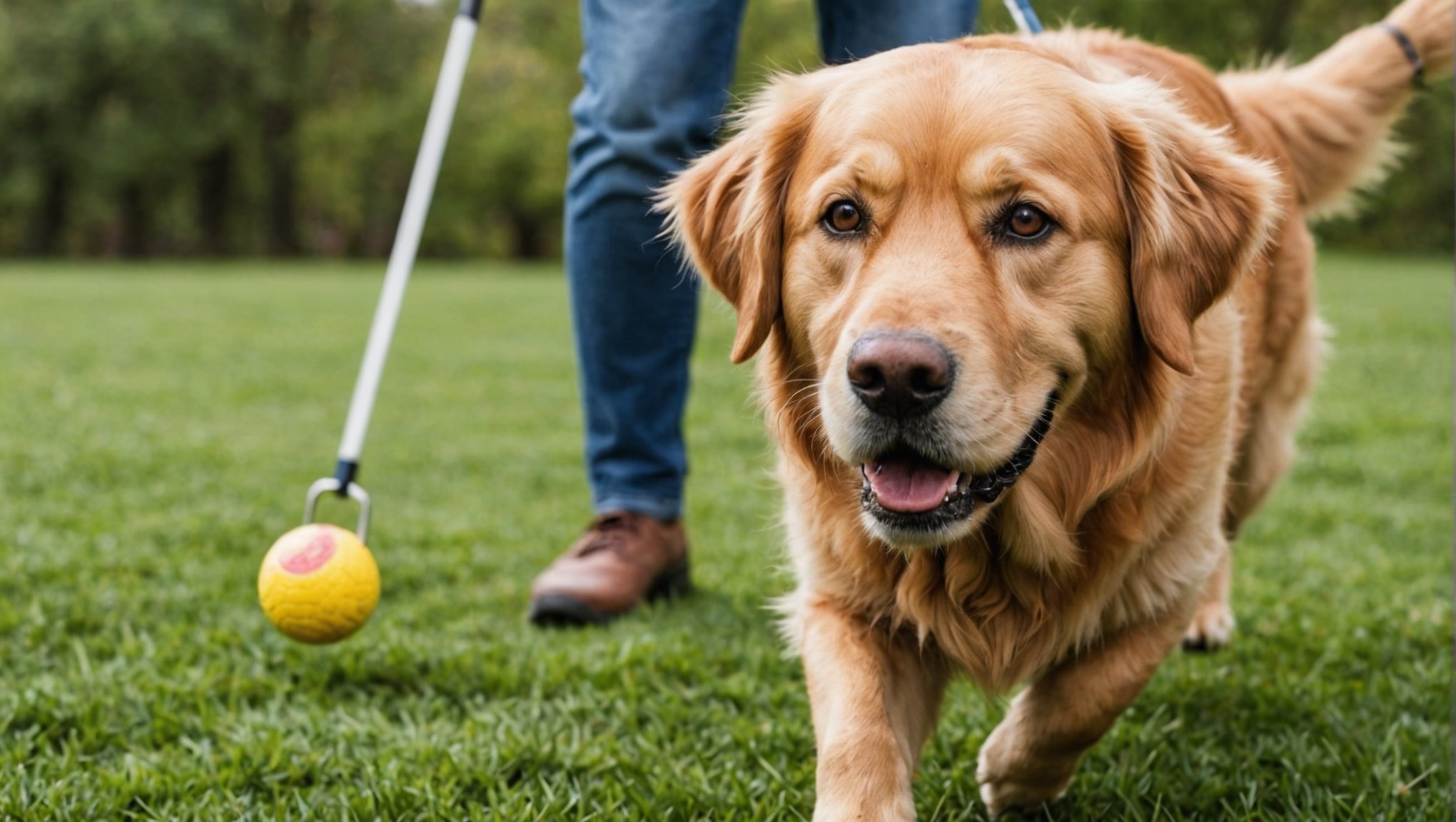Understanding the Needs of Senior Golden Retrievers
As Senior Golden Retrievers age, their needs evolve significantly, requiring careful attention to both Cognitive Needs and Limited Mobility. Recognising when a dog might be experiencing cognitive decline is crucial. Often, these signs include increased confusion, disorientation, or changes in sleep patterns. Regular mental stimulation, such as puzzle games or simple commands, can help keep their minds active and engaged.
In addition to mental well-being, physical limitations become more pronounced with age. Senior Golden Retrievers might struggle with activities that were once simple, like climbing stairs or going on long walks. It’s essential to adapt their environment to their changing capabilities to prevent injury and discomfort. Providing ramps and soft bedding or reducing exercise intensity can accommodate their limited mobility.
A lire aussi : Introducing a Playful New Kitten to Your Herding Corgi: Tips for a Smooth Transition!
Physical engagement should be gentle to ensure their joints and muscles are not overstrained, but it’s still vital. Shorter, more frequent walks or swimming can be excellent alternatives to maintain their strength without causing further strain.
Understanding the needs of Senior Golden Retrievers involves recognising these changes in cognitive function and mobility, allowing us to support them more effectively in their golden years. Facilitating mental and physical engagement remains key to ensuring their quality of life is sustained.
A découvrir également : Détecter et Agir : Reconnaître les Symptômes de Coup de Chaleur chez votre Bouledogue Français
Safe Activities for Cognitive Engagement
Keeping senior dogs mentally stimulated is essential for their well-being. By incorporating safe play, you can enhance your dog’s life and maintain its cognitive health.
Puzzle Toys and Interactive Games
Puzzle toys offer valuable cognitive activities through which dogs solve problems to access treats. For senior dogs, ensure toys are designed for limited mobility—think softer toys or ones that require less manipulation. Introducing puzzle games should be gradual. Begin with simple challenges to avoid frustration and gradually increase complexity as your pet becomes more adept. You’ll notice not just engagement, but also a sense of accomplishment in your pet.
Scent Games
Utilizing a dog’s sense of smell can be a powerful tool for mental stimulation. Start with simple scent games like hiding treats around a small, accessible area and encouraging your dog to find them. Always keep safety in mind—ensure the treats are easily accessible and avoid locations where your dog may strain or stumble. Over time, you can increase complexity by varying locations and adding safe distractions.
Gentle Obstacle Courses
Creating an obstacle course tailored for seniors can encourage gentle movement and engagement. Choose safe materials—soft and nonslip—and design routes that are manageable yet slightly challenging. Encourage playful exploration, letting your dog navigate at their own pace. This offers mental and physical benefits while also strengthening your bond.
Physical Activities that Complement Cognition
Engaging in physical activities can play a pivotal role in complementing cognitive health, offering a dual benefit to both the mind and body, especially for senior dogs. Let’s explore various activities that bring together physical engagement and mental enrichment.
Short walks with variation
Short walks tailored to your dog’s mobility level are essential. Adjust distances appropriately, ensuring they are comfortable yet gently challenging. Try exploring different routes on your walks. This not only invigorates the mind with new sights and smells but also promotes light exercise. Taking regular breaks is important as well to ensure your dog’s endurance matches its capabilities, preventing exhaustion.
Swimming and Water Activities
Water therapy offers immense benefits, especially if your dog has limited mobility. The buoyancy of water supports joints and eases movement, making swimming a great option. Always prioritise safety: ensure your dog is comfortable in water and consider using flotation aids. Engage them in gentle water-based games that keep the activity enjoyable and stimulating.
Stretching and Flexibility Exercises
Stretching is crucial for maintaining health in senior dogs. Incorporating simple stretching routines into their daily regimen can improve mobility and reduce muscle stiffness. Be attentive to any signs of discomfort during these exercises. Stretching should be a pleasant experience, easing muscle tension and enhancing flexibility without causing strain.
Expert Advice for Monitoring Health
Understanding the nuances of senior dog care can significantly impact your pet’s quality of life. Health monitoring is crucial, especially during interactive play. One must be vigilant for signs indicating discomfort or distress, such as heavy panting, limping, or a sudden lack of enthusiasm. Recognising these symptoms early during play can help you adjust activities accordingly, ensuring safety and enjoyment.
Regular vet check-ups are an integral part of health monitoring. These visits provide invaluable insights into your dog’s overall health status. Vets can identify underlying issues that may not be immediately visible. This routine medical assessment supports tailored adjustments to play and exercise, promoting a healthier lifestyle for your senior dog.
Incorporating health feedback from these check-ups allows for optimising interactive play where necessary. For instance, if joint stiffness is detected, the vet might recommend lower-impact activities. This adaptability in play routines ensures that your dog remains engaged without compromising their health.
Furthermore, maintaining an open dialogue with your veterinarian will empower you to make informed decisions about your pet’s well-being. The combination of proactive health monitoring and expert advice ensures that your senior dog’s care is comprehensive and responsive to their evolving needs.
Incorporating Mental Stimulation into Daily Routine
Creating a daily routine that includes mental stimulation can significantly benefit both pets and humans. Establishing a consistent schedule is vital, ensuring daily activities are predictable yet varied, which can enhance routine enrichment. Consistency helps in developing habits, while variability keeps the routine interesting, preventing boredom.
Creating a Schedule
Consistency in daily activities means setting fixed times for meals, walks, and play sessions. Balancing playtime and rest time ensures that energy levels are managed, reducing stress. It’s crucial to incorporate different activities throughout the week to engage different cognitive and physical skills. Consider activities such as walking one day and cognitive games, like puzzle toys or treat mazes, the next.
Engaging with Family Members
Involving family in activities enhances companionship experiences. Social interaction holds significant benefits, particularly for senior pets whose cognitive functions may be declining. Simple ideas such as short joint play sessions or family-friendly games like hide and seek can maintain engagement and enrich daily routines.
Leveraging Technology for Engagement
Technology can be a powerful tool in routine enrichment. Interactive apps or devices offer varied stimulation, and remote-controlled toys provide a dynamic form of play, demanding cognitive engagement. Additionally, tools for monitoring activity levels can ensure balanced routines, preventing under or over-exertion. Using tech enhances not just play but daily life integration.











